- S.D. Eibar ready for maiden La Liga outing
- SD Eibar stengthen ahead of debut La Liga season
- Can ‘Super Mario’ live up to expectations in Madrid?
- MAN IN THE GROUND – Brentford 0 – 4 Osasuna
- Historic Basque derby welcomes S.D. Eibar to La Liga
- Munich to Madrid, via Brazil – Tony Kroos
- Rakitic in Spanish Switch
- Can Spain find redemption in Rio?
- Viva Espana! A season of redemption for Spanish football
- From the old to the new: who can fill the void in years to come for La Roja?
La Romareda – Home of Real Zaragoza
- Updated: 6 January, 2012
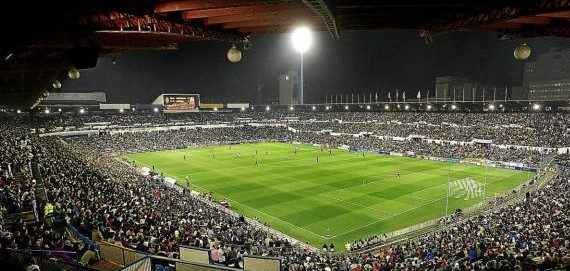
As you cross the Rio Ebro and head south along the wide avenidas towards its centre, the city of Zaragoza treats you to some magnificent sites.
Its graceful fusion of Moorish, medieval and more recent styles of architecture lifts your hopes and expectations so much so, that when you see La Romareda, the city’s municipal stadium, your initial reaction is one of disappointment. It’s an “Is that all there is?” moment. Thankfully, the story of Real Zaragoza is a lot more interesting than the utilitarian and rather undistinguished stadium it plays in.
The citizens of Zaragoza and for that matter, other parts of Aragon, took their time to fully come to terms with football. Organised competitions did not truly get under way until 1915, a good decade or so later than neighbouring Catalunya. Over the next 20 years two clubs, Iberia Sport Club and Club Deportiva Real Zaragoza, dominated the local scene.
Unfortunately, neither made much impact on a national level so on 18 March 1932, Iberia and and CD Real Zaragoza agreed to merge forming FC Zaragoza, or as we know them today, Real Zaragoza. Iberia had developed the city’s first purpose built stadium, the Campo de Torrero and it was here that the club set up home.
The club developed Torrero and by the early fifties it held 20,000 spectators, but the clubs directors recognised that Torrero could not be their long-term home and set about purchasing the ground from the original owners.
This would then be used to clear the clubs debt and the remainder used as collateral when negotiating with the local municipality. Luckily for Real Zaragoza, they had a sympathetic ear to call on in the shape of Mayor Luis Gómez Lagun, who was instrumental in agreeing the financing and location of the new stadium. Real Zaragoza played its last match at Torrero on 28 April 1957, a goalless draw with Real Sociedad in the first round of the cup
Work began on the new stadium in November 1956 under the guidance of architect Francisco Riestra. The project cost 21.5 million pesetas and the ground featured a large covered main stand on the west side. The cantilevered roof covered the upper of two tiers, whilst on the opposite east side stood a large two tiered terrace.
The smaller end terraces were slightly curved leaving a space of around 8 metres between the touchline and the front of the terrace. The stadium had been built on open fields named La Romareda, just to the south of the city’s university and around 3 kilometres west of the old Torrero ground. It opened on 8 September 1957 in front of a capacity crowd of 27,000 and Osasuna provided the opposition for an exciting match that saw Zaragoza win 4-3.
The new stadium acted as a springboard as the club, as they reached the final of The Copa del Rey in four successive seasons, winning two finals and also found success in the Inter Cities Fairs cup winning the trophy in 1964. League form wasn’t too shabby either as Zaragoza finished in the top five places in every season from 1961 to 68.
During the 1976-77 season La Romareda was extended, with both end terraces gaining an upper tier and covers, which extended around from the main west stand. The new capacity stood at 50,000. In 1978, La Romareda was confirmed as a host venue for the 1982 World Cup and underwent a 120 million peseta refit.
This included adding a roof to the newly refurbished east side, adding seating to the upper tiers, and new press facilities in a two storey free standing block behind the main west stand. This was linked to the ground and Zaragoza had eyes on using it for their club offices. The municipality baulked at the idea and quickly installed their own bureaucrats after the tournament was over.
La Romareda now had a capacity of 46,920 and hosted three matches during the finals featuring Yugoslavia, Honduras and Northern Ireland. They were poorly attended with the ground barely half-full for the Yugoslavia games and only 15,000 attending the Honduras-Northern Ireland fixture. The participants are commemorated with their names on individual flag poles at the main entrance to the stadium.
The nineties saw further refurbishment of La Romareda in advance of the 1992 Barcelona Summer Olympics. The refit saw seating added behind the south goal and a ring of booths, or Palcos added to form a band around the stadium between the first and second tiers. This reduced the capacity to 43,349, not that it was ever remotely tested during the Olympics.
The six group matches and one quarter final that La Romareda hosted, attracted a pitiful aggregate of 35,500. The stadium was finally converted to an all seater stadium in 1998 when the lower tiers of the north end and east terrace were seated, giving the ground a current capacity of 34,596.
From the outside, the stadium resembles something one used to see in the former Soviet bloc.
Its construction of pillars and brick infill, mixed with open mesh fencing that displays the internal skeleton of the terraces, is at best grim. On the south west corner of the ground is the strange juxtaposition of El Cuboa, a modern mirrored cube that doubles as the tourism offices, next to the beige and ever so bland Mundial Press Centre.
Inside the stadium is slightly better, although it is all a bit, well old! The lower tier is very shallow and the roof offers it no protection from the elements. The upper tier is covered, but very cramped. That’s not to say that the stadium has some nice touches. The palcos, a ring of segregated booths that sit between the two tiers offer a great view and are just close enough to gain some benefit from the roof. I also like the goal nets, which have to be the deepest anywhere in world football.
Over the past decade, there has been plenty of talk about rebuilding La Romareda or relocating, but with greater constraints of public money, all plans have been shelved.
All of which leaves Real Zaragoza stuck in La Romareda. I’m sure that as time passes and the stadium becomes more of an anachronism and a relic of a bygone era, it will create more interest, but that will be out of curiosity rather than admiration.
_____________________________
To read more on the footballing stadiums of Spain, visit Chris’s excellent site Estadios de fútbol en España

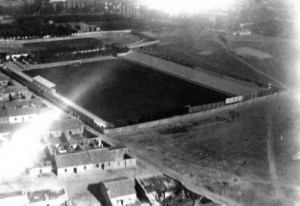
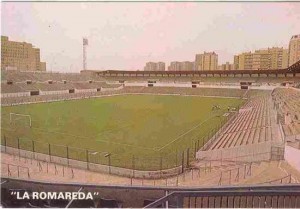
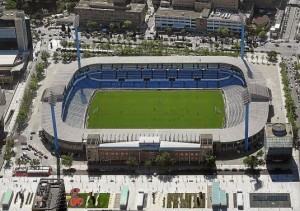

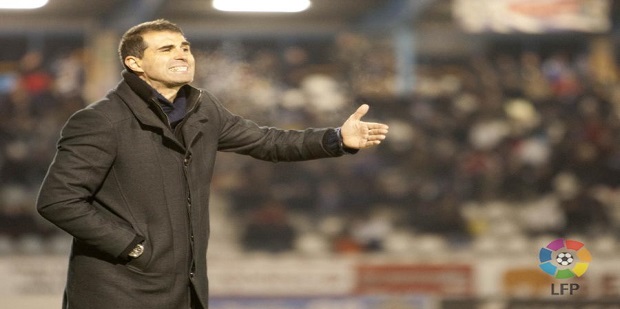



You must be logged in to post a comment Login